From Temple to Temple
As we head from Chennai to Kumbakonam on a temple tour, My daughter asks me ‘So, is this a pilgrimage?’, I am not sure. What constitutes a pilgrimage? Is it just the process of visiting religious or holy sites? Or is it the intention? Whether it is a pilgrimage or not, my intention is to visit some of the many temples which dot the landscape around Kumbakonam.
We leave Chennai by 7 am in order to avoid the morning rush. The toll road which takes us a fair way is very good but later on we encounter rather poor roads. The drive of 275 kms takes us about 6 hrs, including a short stop for breakfast. Travelling by road in India is always difficult. Our driver is excellent but still he overtakes from the wrong side, squeezes past motorcyclists in the same lane and makes overtaking decisions against oncoming traffic which I would not dream of. I force myself to disassociate from the driving by looking outside. That is not easy either. The poor condition of the roads, the shacks, the poverty, the interminable garbage everywhere…ah, its not easy to see. I am a foreigner in an Indian skin, I realise, yet Indian enough to feel both frustration and shame at the state of things. Am I overreacting? I don’t know.
Our hotel is very average but adequate. My daughter does not like it. ‘Surely we can do better?’ she asks. We could. But secretly, I had wanted simplicity, not luxury. Perhaps this is a pilgrimage after all.
I want to give our driver a rest so decide to walk to get some lunch. The Venkataramana restaurant was recommended to us for a decent vegetarian meal. I am melting with the heat by the time we reach it. Its a typical middle class eatery with long tables shared with strangers. At lunch time, there is only a set meal. The AC room is full and the waiter rudely turns us off. My daughter won’t stand for it and barges in to seat herself at a table. I wash my hands, cringing at the state of the basin, and come to sit beside her. We are getting strange looks from everyone; I assume it is because of my daughter’s non-Indian English. But we realise soon that we have barged into a wedding party! The room has been reserved for a group. We are too hot and hungry to care! The meal tastes good.
We return to the hotel to rest a while and then set out at 4pm to start with three temples within Kumbakonam. My blog posts are as much about photography as they are about travel. However this time I am shackled by the rules in most temples; photography is not normally permitted inside temples. So excuse the quality of the pictures below.
SARANGAPANI TEMPLE
We start with the Sarangapani temple. We are told that it would open at 4:30 pm but it doesn’t open until 5 pm. As we wait, we see a Hare Rama Hare Krishna group. They are very loud in their chanting and my daughter does not like their noisiness. She likes temples to be quiet, a place of contemplation. But Indian temples are seldom like that, I explain. These are not churches, where silence is advocated. Temples resound with music and chanting, with conversations and children’s cries, with trumpeting elephants or mooing cows. Its like life, a confusion of sensory inputs. Yet millions of people find their moment of peace within these walls.
This ancient temple is more than 2000 year old but I have read that it was renovated in the 16th century. It has a sanctum shaped like a chariot with beautiful sculptures of elephants and horses pulling the gigantic wheels. My hands itch for my camera but I desist. The sanctum is dark. I peer into it to see the deity in the lying down posture, head supported up by one hand. I wonder, did the great azhwars (Saints from 7th-9th century) see exactly what I see before me when they wrote their beautiful songs and hymns? Did Andal walk the same steps that I take? This temple has been venerated by many of the Azhwars including Andal, Periyazhwar, Peyazhwar, Nammazhwar etc. I feel linked to them through the centuries, my beliefs a continuation of theirs. To read more about this temple, click here.
ADI KUMBESWARAR TEMPLE
We walk past a long corridor with shops on both sides as we approach the Adi Kumbeshwarar temple. The town gets its name from this very temple. Praised by the 7th century saints Appar and Gnanasambandar in their hymns, these stones have been here for many centuries. The Shiva Linga is said to be svayambhu – self-formed. As I walk around the sanctum in the prakaram, as is the practice, I enjoy seeing the statues of all the Nayanmars, the great Shaivaite saints. This is a lovely temple.
We stop to admire the handsome temple elephant. I encourage my daughter to hold out a coin to the elephant and receive its blessing. She giggles nervously as the elephant lays its trunk on her head after delicately picking up the coin from her hand. To read more about this temple, click here.
SRI RAMASWAMI TEMPLE
Our last visit within Kumbakonam town is the Ramaswami temple. It is is said to have been built in the 16th century by Raghunatha Naik, King of Tanjore so is not as ancient as the other two. The temple is not in funds, I guess, as it is very shabbily maintained. The pillars inside are intricately carved and the deities inside are huge. There is not much of a crowd as we visit and I feel a sense of peace.
The temple is famous for the scenes of Ramayana painted in the outer prakaram. I wander past looking at these paintings and wonder at the rather naive style with no attempt at perspective or reality. The art of sculpting is so well developed in India from ancient times. Why did the art of painting not really match up? Yes, there are some cave paintings I have seen but still… Being a great admirer of art from Europe I am puzzled by this.
The utsavar or the festival deity used for processions is very beautifully decorated. I love the boots! To read more about this temple, click here.
SRI UPPILIAPPAN TEMPLE
As I walk into the Uppliappan temple, I am riveted by the colourful ceiling! I am again walking the corridors of another ancient temple, praised repeatedly in the hymns by the Azhwars (7th-9th centry) such as Nammazhwar, Thirumangaiazhwar, Poigaiazhwar and even Peyazhwar. The deity is a very impressively large Lord Vishnu in a standing form. There is a legend which says that Lord Vishnu came to claim as bride the Goddess as a young girl. Her father claimed she was not ready as she could not even cook with the appropriate amount of salt. So the Lord agreed to eat without salt and therefor the offerings in this temple are always salt free! That is one explanation of the name of the temple (uppu=salt). The other possible meaning comes from the tamil word oppu (comparison), calling the Lord here as the Incomparable.
(Source of picture : Temple.Dinamalar,com)
I had been wanting to visit Tirupati for sometime but it was not possible during this trip to India. I was relieved to know that Uppiliappan is considered the elder brother of the Lord at Tirupati and the priest said that visiting here was considered to be equal to many visits to Tirupati! To read more about this temple, click here.
SRI NAGESWARAR TEMPLE
Our last temple visit of the day is one of the famous Navagraha Sthalams, temples dedicated to the nine Vedic astrological deities. This one is dedicated to Rahu, a deity with malefic attributes. The main deity of the temple is Lord Shiva; there is a shrine dedicated to Rahu in the outer Prakaram. Appar and Tirugnana Sambandar, both from the 7th century, have sung in praise of this temple which means that the temple is more than 1300 years old. There are some nice carvings but I am tired and can’t give it the attention it deserves. To read more about this temple, click here.
We are hungry by this time. On the way back to our hotel, I spot what looks like a decent place to dine. The Quality Inn turns out to be very neat and clean with an extensive menu. We like it well enough to return the next day as well.
BRIHADEESWARAR TEMPLE
The next morning we set off before 8am to Tanjavur (Tanjore). I reckon we are already late but my daughter objects to earlier starts. The temples are open normally from very early morning to noon and then again from about 5 pm to 9 pm. To make most of the day, one should start as early as one can. The road to Tanjore is really bad, very bumpy indeed. But the landscape is a beautiful carpet of rice fields.
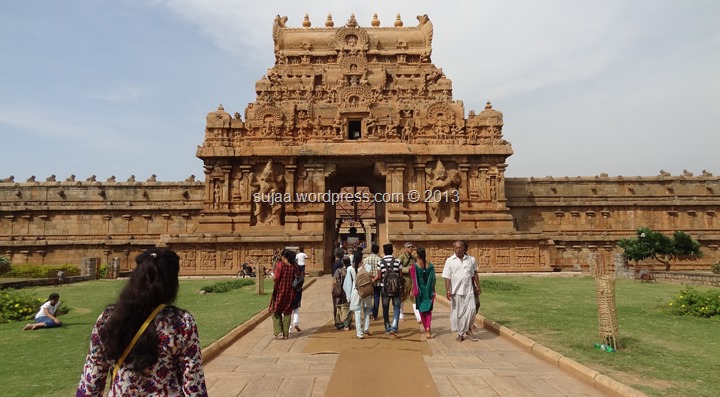
I am delighted from the first glimpse of the temple. Unlike other South Indian temples, this is not coloured, which makes it look very elegant. It is an immense complex built by the Chola king Rajaraja 1 between 1003 and 1010. As we enter it, I absolutely understand its common name ‘Periya Koil’ , the Big Temple! Built entirely in granite, it is majestic. At the time it was built, it was the tallest temple in India by a magnitude of 10, a great achievement indeed! At 216 feet, the vimanam (tower over the sanctum) is the tallest in India and the temple complex is spread over 40 acres (160,000 m2).
The main deity is Lord Shiva. The mandapa is impressive and is topped by a 81 ton stone kalasam. . It is said that a 6km ramp was built so that elephants could drag the granites for the tower.You can see the back of the colossal Nandi facing the temple, a later addition from the Nayak period.
There were plenty of visitors, both worshippers and tourists. But the complex is so huge that one doesn’t notice the crowds. We go into the main shrine (above). It is very crowded and we are given a scant few minutes before being hurried along by the priests. There is no time even to pray, which rather defeats the idea of a temple! As we walk barefoot on the paving outside, I am glad that the sun is comparatively mild today. I must remember to pack some sock-slippers the next time I come on a temple tour.
This is truly one of the most impressive temples I have ever seen. If you are in the South of India, I strongly recommend a visit. There are so many details! I regret not having taken a guide for I am sure I missed many things. Some pictures from my collection below to whet your appetite. To read more about this temple, click here.
GARBHARAKSHAMBIKAI TEMPLE
I had asked our driver to take us to Darasuram on the way back to Kumbakonam. However, he chooses to take an alternate route back and it takes very long. I am annoyed but he has been so good that I do not protest. He recommends the Garbharakshambikai temple on this route. We do a quick tour but I do not think it a worthy replacement of what I have missed. Sigh! To read more about this temple, click here.
SWAMIMALAI TEMPLE
As the time creeps up to noon, we can fit in a quick visit to Swamimalai which is on the way. I had expected to have to climb a lot but in fact there are not many steps. Nor is it really a malai or a hill, so there are no views of the surrounding country. The temple is beautiful but as I do the pradakshina, my right foot slips into a groove in the ground, a water channel. The pain makes me cry out and I shed a few silent tears. Within a few minutes my whole foot, especially my ankle, swells up like a balloon. I give up on visiting the rest of the temple and somehow limp back to the car. I am dismayed, but I don’t intend to let a small thing like this come in the way of my temple visits. Stopping at a pharmacy, my daughter, a doctor, straps my ankle firmly and with it, I can limp comfortably. To read more about Swamimalai temple, click here.
NACHIYAR KOIL
We have lunch and rest for an hour before setting off again. My foot is worse after the rest. I swallow ibuprofen and some paracetamol hoping that no ligaments are torn. Our first stop is at the Nachiar Koil temple. This ancient Vishnu temple was praised in the hymns of the Azhwars (6th to 9th centuries). It is said to have been built by the Chola king Kochenganan in the 3rd century. There is an amazing stone Garuda shrine which is supposedly made of saligrama stone. In this temple, the Goddess is given precedence over Lord Vishnu. My feminist self rejoices! To read more about this temple, click here.
SRI TYAGARAJAR TEMPLE
With my great love for Carnatic Music, Tiruvaroor is a must-see destination for me. The three great poets-composers-musicians (imagine being all three!) who were instrumental in developing the tradition to what it is today were all from this little town. Tyagaraja is celebrated as a Saint and I have come to visit his temple here.
We are lucky to arrive just in time for the 6pm puja. I am surprised at how crowded the temple is. It grows dark as the service finishes and so I abandon the idea of exploring the extensive temple complex. I am nervous about hurting my foot further on the uneven paving. The outer areas seem rather run down.
The homes of the three great composers are within walking distance to each other. It is like having Mozart, Beethoven and Bach living one block from each other! How blessed is this town! Tyagaraja’s house is closed but Dikshithar’s house has a simple shrine which I visit. We then go around a few times before we find Shyama Shastri’s home. There is a small shrine and I leave a small offering. The man who takes care of the shrine begs me for a bit more as he says he has run out of oil for the lamps and does not have the money to buy more. My heart is heavy as I leave a bigger amount. Why does India value its great composers so little that it cannot even afford to keep up a small shrine in their honour? Why can so many more people name A.R.Rahman’s compositions rather than Tygaraja’s compositions? Why are we so eager to abandon the old for the new? I ache with sadness.
We go back to the very clean Quality Inn restaurant before calling it a night. I have much to think about from this day’s excursion.
VAITHEESWARAN KOIL
We check out and in the car by 7:30 for which I thank my daughter as she finds this difficult. I stare blindly out of the window, by now immune to the visible poverty. It has taken only two days to desensitise me, I think with shame. ‘What if we started a meals-on-wheels, but as a charity?’ I ask my daughter, referring to the Australian initiative I am familiar with. ‘Can we afford to sponsor a hundred simple meals a day for the poor?’. I talk of ideas with my daughter, but I know even as I speak that I will return to my home and my life and forget about the way my heart cringed on seeing old, withered hands held out to me in supplication.
As we walk up to the temple of Shiva as the Great Healer, we are accosted by shopkeepers wanting to sell us jaggery, salt and pepper to dissolve in the Temple tank, thus dissolving our illnesses. I buy some at a very inflated price and pray that my ankle heal quickly (post script: it has!). It is even more swollen than before today and each step is stiff and painful. My daughter helps me up and down many steps. The temple is very crowded and it is hard to even get a glimpse of the deity. Another of those very ancient temples, this has been sung of by the Nayanmar saints from the 7th century. If you want to read more about this temple, click here.
On the way out I pause curiously to ask about the ‘Nadi’ astrologers who seem to abound here. I am not convinced about their authenticity and later our driver tells us that it is all a big scam to relieve the sick who visit the temple of their much-needed money. Yet I remember my mother’s faith in this kind of astrology. I wonder who is right?
THILLAI NATARAJA TEMPLE
This is a temple that I have long wanted to visit, so I am very excited as we enter it. I have a love for the ancient, and this is ancient indeed. The temple was built by early Cholas in the 3rd century but of course future kings of many dynasties have added to it. Much of what we see now is from the 12th or 13th century. The deity is Shiva in the form of Nataraja, the Cosmic Dancer. I am very attracted to the concept of the cosmic dance which keeps everything in the universe moving; I also admire the form of Nataraja – it is so very beautiful! If you want to read more about this temple, click here.
I am puzzled to see a crowd of worshippers craning their heads to look at a sannidhi through a window. I ask and am told that indeed it is the main shrine. We make a small payment for archana and are allowed up into the hall in front of the deity. There is an abhishekam of the crystal linga in progress. I, who am not in the least ritualistic, feel my soul become entwined with the ritual. As the holy ash is poured over the deity, I feel myself cleansed and born anew. ‘Ah, so this is what they call Thillai. I have heard it talked of so many times, but today I have finally realised what it is’ . I sit beside the ancient columns lost in the thought of the dancing God while Gopalakrishna Bharati’s beautiful song in Raga Behag plays a background score in my head.
The long drive back home is uneventful. This has been a good trip and I feel blessed for having had this opportunity. For those considering a visit to these temples, here is a map of the temples I visited.
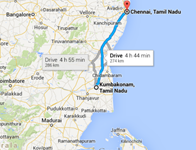

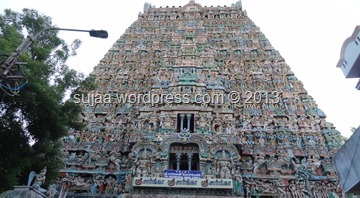
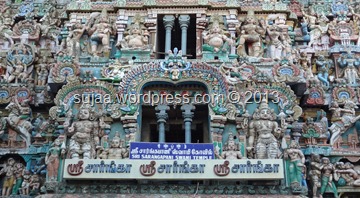
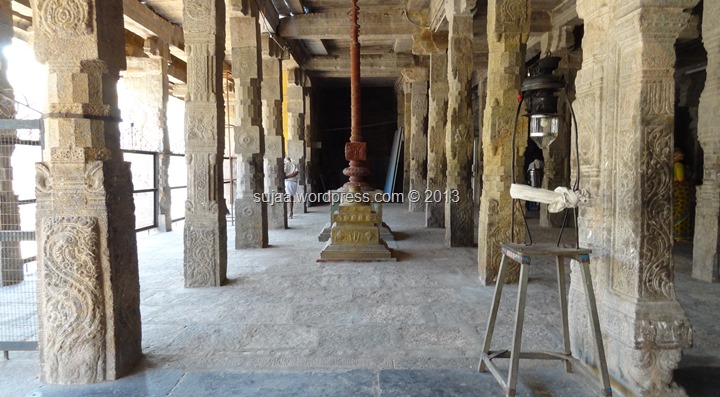
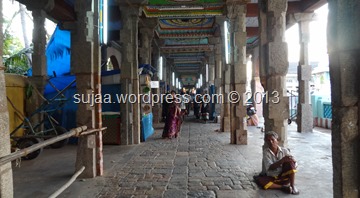
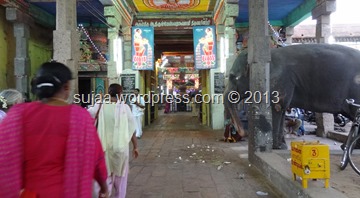
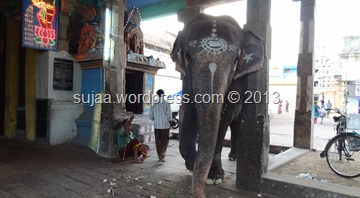
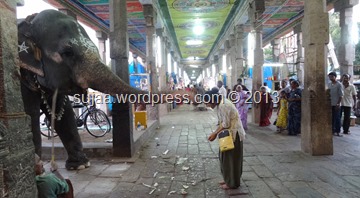
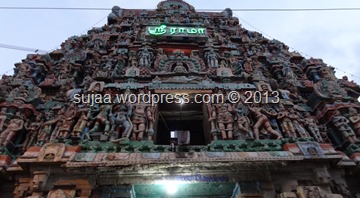
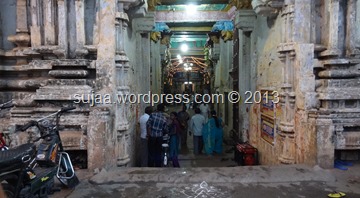
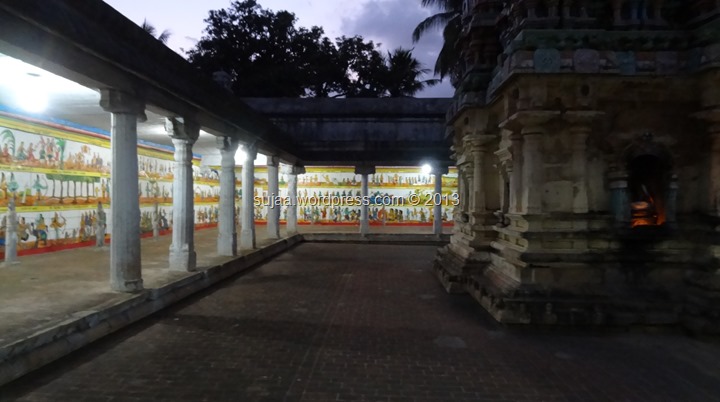
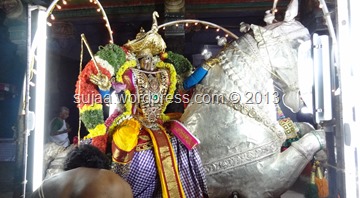
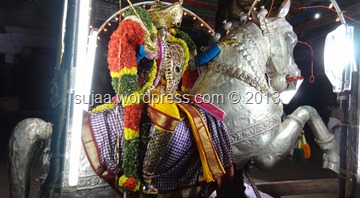
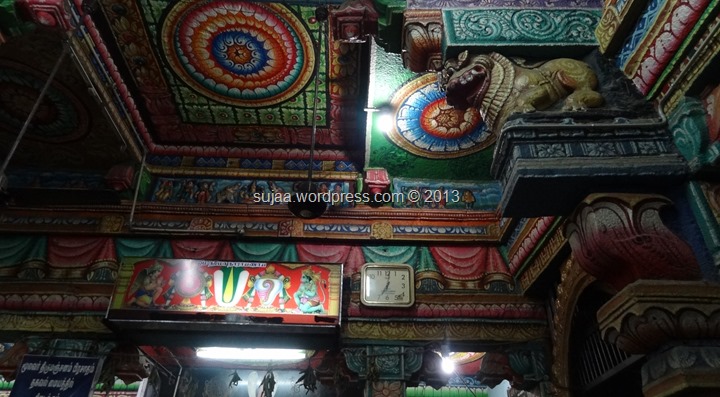
![[Image1]](https://i0.wp.com/img1.dinamalar.com/Kovilimages/T_500_426.jpg)
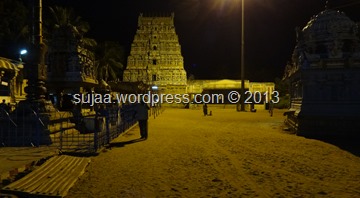
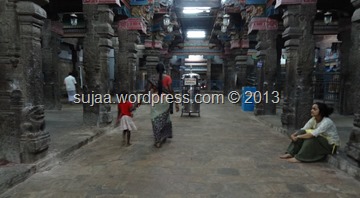
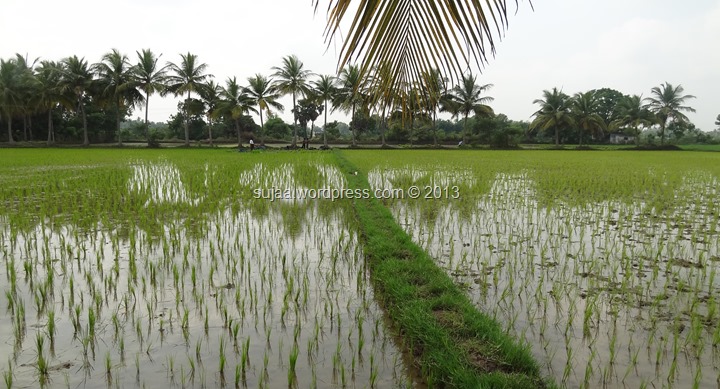



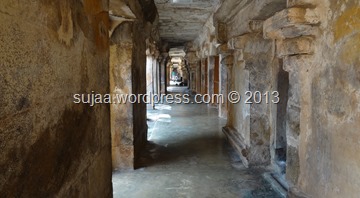
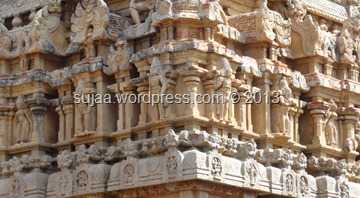
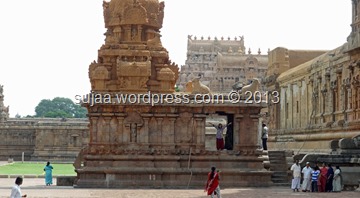
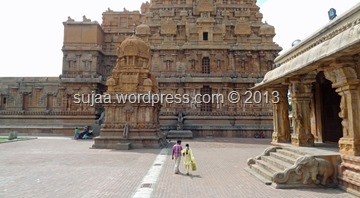
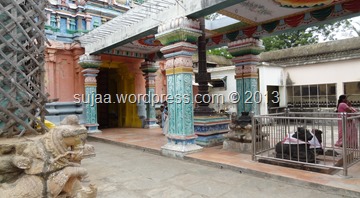
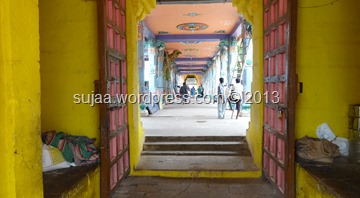
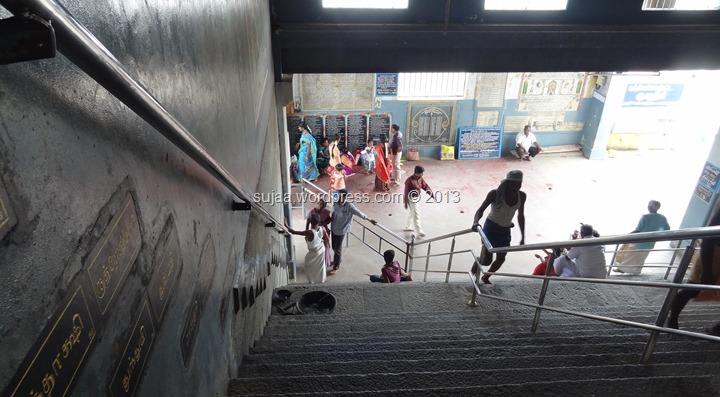
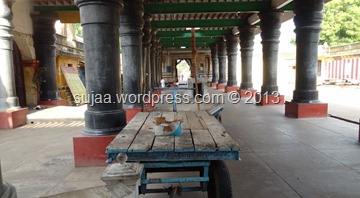
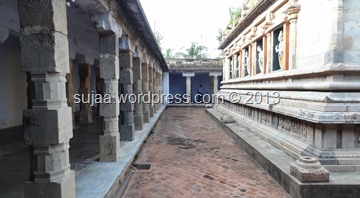
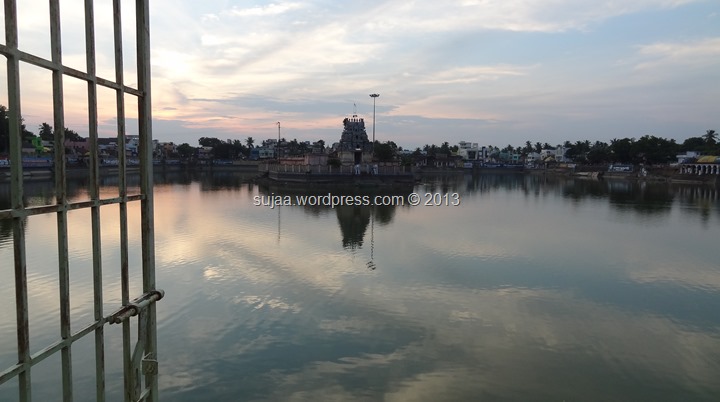
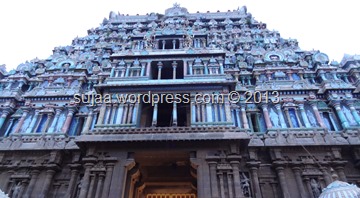
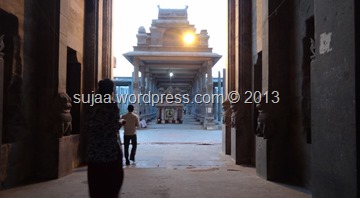
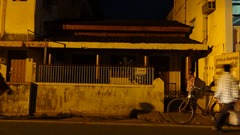
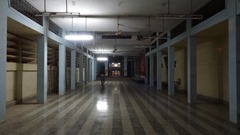
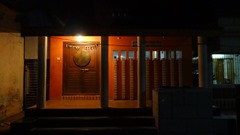
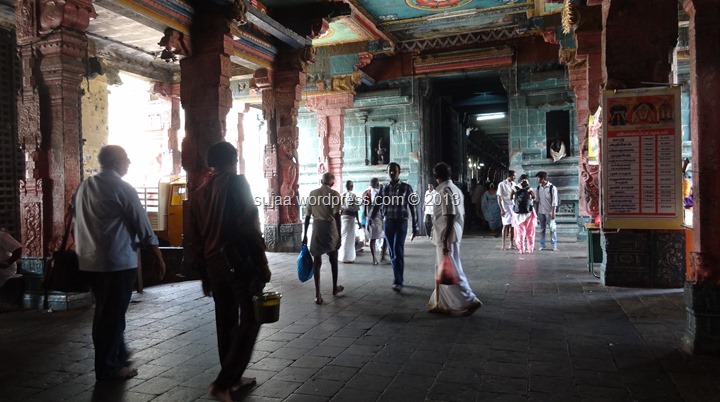
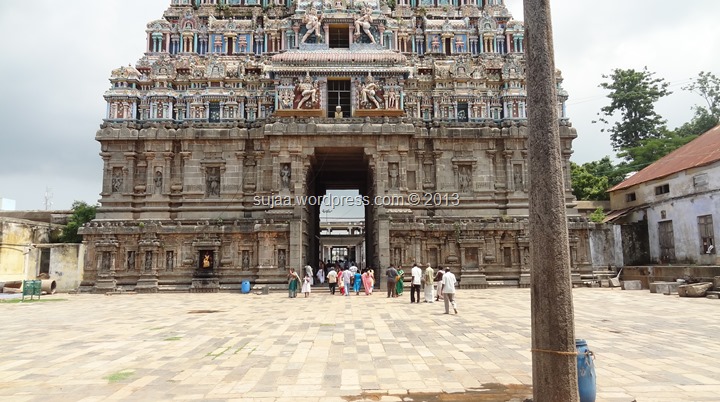
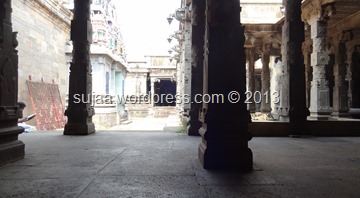
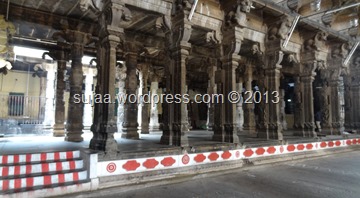

“Why does India value its great composers so little that it cannot even afford to keep up a small shrine in their honour?”
Suja, I am NOT surprised at your anguish – for you are such a dedicated lover of Music – often featuring the compositions of the Greats sung/played by great/good artistes. I almost see tears-of-joy in your eyes during your visit to the homes of the Great TRINITY OF CARNATIC MUSIC.
I’m glad your ‘Dr. daughter’ is on her first visit to India and had a glimpse of India from what I read & surmise from her ‘reactions at ‘places & hotels’.
I’m not much of one who gos on ‘pilgrimages’, but your ‘post’ made me recall the ‘pilgrimage’ – to GuruvayoorAppan Temple & Udupi Sri Krishna Temple – I took/went along with my son-in-law who had come to India on a brief visit in January 2008.
Your ‘post – with commentary & photos’ has taken me to places & temples I had not visited and may/will not visit in this ‘janmam/birth’. Thank you for your ‘post’..
Hope your sprained ankle/foot has healed. God you’ve a ‘doc’ by your side all along!
Wish you an enjoyable stay in India and wish your daughter makes brief visits to India again & again – and, may be, .get involved in a bit of ‘social medical service’ to the poor & needy
Best Wishes.
Raj
Thank you Raj. I do love temples and am trying to convince my husband to go on a India-wide pilgrimage once he retires. He may come along for my sake. My stay in India is finished and my ankle feels much better, thank you.
Cheers. Suja
Lovely post Suja! Great pics. Your description of the temple and surroundings was a joy to read. Quite sad to learn about the upkeep of the shrines of Trinities. Hope that state will change soon. Glad to hear your leg is better now..
-vidhya
Thank you Vidhya. It was quite a thrill for me to visit the shrines of the Trinity. You know, Oothukadu was just 20-25 kms away but it became late and the roads are not great so I didn’t go. I need to go back to the region as there is so much I missed. 3 days is not enough, one needs 5 or 6 days, probably more. And yes, my foot is much better 🙂
Suja
“I sit beside the ancient columns lost in the thought of the dancing God while Gopalakrishna Bharati’s beautiful song in Raga Behag plays a background score in my head”
Suja, I was drawn to your ‘post’ – a second time – because I wondered ‘how did Suja miss going to Chidambaram Temple?’ I now know you didn’t miss it!
No, I’v never been to Chidambaram, but every mo9rning -even at this moment – I listen to.’Amma’ MSS singing the short & sweet song “Aadum Chidambaramo . . “. I don’t know the technical details of the song,, but it is so pleasing on the ears – full of joy! I have sent my ‘wish’ to my granddaughter to sing this piece during her Carnatic Vocal Arangetrum in June 1914 (and of course to choreograph it for her dance performance on stage)
May the Temples-of_India draw you & your husband to visit them.
Best Wishes.
Raj
No Raj, of course I did not miss Chidambaram! I like Adum Chidambaramo very much but I have featured Idu Dano Thillai in the same raga as a celebration of my visit in my Music blog. Hope you enjoy that too.
cheers. Suja
Enjoyed reading your experiences and seeing the pics; it made me feel like I have traveled along with you. It also reminded me of a trip to Madurai in my twenties on our return from visiting Velankani also considered a pilgrimage. I can’t quite recall the names but we visited some famous temples in the area and had the same reactions as your daughter; didn’t like the hotels where we stayed or walking barefoot inside the temples but admired the architecture and the statues. My other thought was that on my recent trip to India last winter, I too felt the same shame at the poverty seen by foreigners when they visit India and the frustration that despite the huge leaps taken by India into the 21st century, the poverty doesn’t seem to have lessened. With regard to the upkeep of the shrines and the temples, churches, etc., why can’t India designate these as heritage properties and allocate government funds? There’s so much great architecture and art that need to be saved for future generations. Such a crime.
Thank you Jessy, as a fellow Indian connected as yet disconnected with our Indian home, I am glad that my thoughts touched a chord with your own. It is indeed a crime that the government is apathetic towards our treasures, but it is even more of a shame that Indians who should feel such pride in their heritage are themselves the cause of desecration of the sites with graffiti, garbage, and worse.
I like your narrative style for the temple visits. The simple descriptions without unnecessary adornments are a treat to read. Will come back to your blog again…
The song “Idhudhano thillai sthalam “ brought me here.
This year I would like to go to one of navrathri sangeetholsavam or chembai sangetholsavam. Maybe our paths will cross.
Thank you for your compliment, very kind of you 🙂 I do love that song, you know, and my heart longs to go back to Thillai to experience that feeling of divine presence. I wish I could come to the music festivals but Australia is a long way away and I have ‘grandmother’ duties from which it is not easy to take leave for the moment. I wish you full enjoyment of whichever festivals you get to go to! That too is a bhagyam 🙂